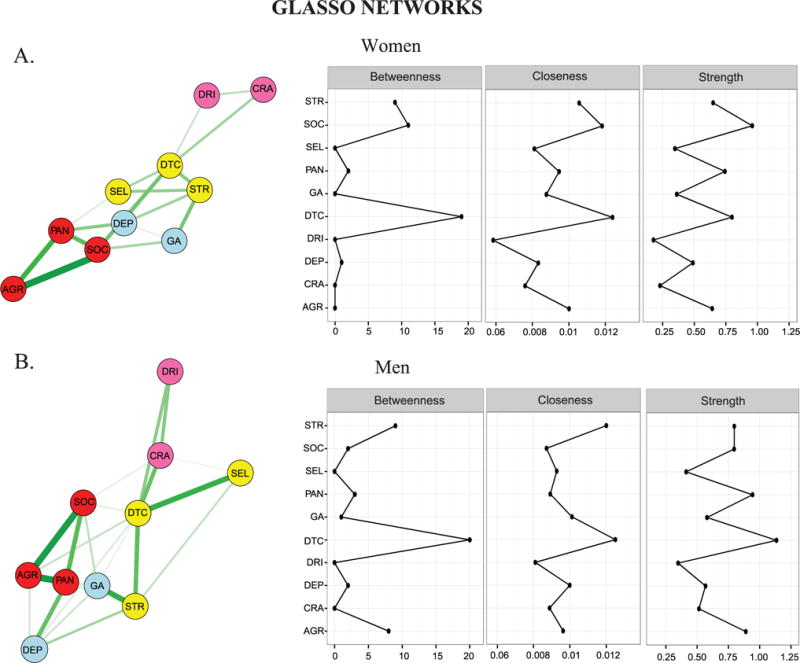Figure 5.

GLASSO networks (left panel) and corresponding centrality plot (right panels) for women (Figure 5A) and men (Figure 5B). Nodes/elements represent measures of anxiety and depression, perceived stress, alcohol craving, drinking behavior/total number of drinks consumed, DTC, and coping self-efficacy. Edges represent partial correlations between nodes (controlling for all other nodes) and edge widths represent the strength of element-element relationship according to the GLASSO algorithm. The algorithm removes edges that are at or near zero. See the online article for the color version of this figure.
